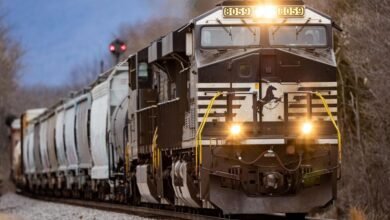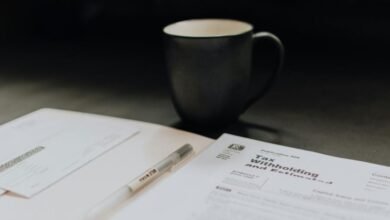In Wisconsin, Democrats hope competing down ballot helps Harris, too – WisPolitics

Washington, D.C. — As the New York Times reported today, new fair maps are fueling “an energized Democratic Party” in Wisconsin “after perhaps the most systematic gerrymander in the country” was replaced with more competitive district lines. The local energy could even have an “updraft effect — ideally benefiting both Vice President Kamala Harris and Senator Tammy Baldwin, whose seat is critical to Democrats’ hopes of keeping control of the chamber or at least holding Republicans to a narrow majority.”
Since 2018, Eric H. Holder, Jr., the 82nd Attorney General of the United States and Chairman of the National Democratic Redistricting Committee (NDRC), has made numerous trips to mobilize voters, raised millions of dollars, and brought increased national attention to critical state-level races in Wisconsin. Specifically, the NDRC made investments in the Wisconsin Supreme Court races in 2018, 2019, 2020, and 2023.
All of this contributed to the Wisconsin Supreme Court going from an ideologically-driven, conservative court to one that is independent, fair-minded, and pro-democracy. Last year, the Wisconsin Supreme Court overturned one the nation’s most egregious gerrymanders and ordered that new fair state legislative maps be drawn in its place. This November’s election will be the first with the new maps in place in well over a decade and it’s clearly already having an impact on voter enthusiasm.
Read the full story from the New York Times, below:
New York Times: In Wisconsin, Democrats Hope Competing Down Ballot Helps Harris, Too
By Jonathan Weisman
Oct. 11, 2024
John Soletski’s brick Arts and Crafts house, with its Trump-Vance yard sign and its Trump flag festooned with guns, was not on the list as Jamie Wall, a Democratic candidate for Wisconsin’s State Senate, knocked on doors on Monday evening in a working-class neighborhood in Green Bay.
So when Mr. Soletski dashed out to meet him, there was no guarantee it would go well.
“I like the way you’re out here — you don’t see that very much,” said a beaming Mr. Soletski, a 64-year-old with a yard business. He offered Mr. Wall his hand and a pinch of Copenhagen tobacco snuff that the candidate politely declined. “I’m voting for the Trump guy,” he said, “but I’m reading up on all the others.”
It was the kind of exchange Democrats are hoping for as they hit the streets of Wisconsin, rounding up votes in the first truly contested state legislative races in 13 years. An energized Democratic Party, awakened like Rip Van Winkle after perhaps the most systematic gerrymander in the country, is eyeing newly competitive local districts for a possible updraft effect — ideally benefiting both Vice President Kamala Harris and Senator Tammy Baldwin, whose seat is critical to Democrats’ hopes of keeping control of the chamber or at least holding Republicans to a narrow majority.
In a state that President Biden won in 2020 by 20,682 votes, and former President Donald J. Trump won in 2016 by 22,748, even a few thousand voters energized by the candidates at their doorstep could make a difference. Ben Wikler, the chairman of Wisconsin’s Democratic Party, said issues like abortion, school funding and Medicaid expansion — all decided by the State Legislature — would drive “a small but incredibly consequential group of voters to the polls.”
“This is really a secret weapon,” he said.
Despite Wisconsin’s status as a national battleground, Republicans have controlled both of the state’s legislative chambers since 2011, aided by the voting maps that their party drew heavily in its favor. Just south of Green Bay, for example, three State Senate districts converged in a jigsaw puzzle configuration, allowing three Republican state senators to live within a half-dozen miles of one another.
Then last year, voters handily elected a liberal justice to the State Supreme Court, handing the left a majority. The campaign that elected the justice, Janet Protasiewicz, was driven in large part by a push to prevent a 19th-century abortion ban from snapping back into place with the repeal of Roe v. Wade. But voters also chafed at the draconian gerrymander that ensured that an almost evenly divided state had a Legislature with an overwhelming Republican majority.
Just after Justice Protasiewicz was sworn in, a coalition of voting-rights groups and left-leaning law firms filed a legal challenge to the districts, arguing that new maps should be drawn before the 2024 election. The new liberal majority agreed, and now those maps are in place, though the high court has yet to address similarly gerrymandered U.S. House districts.
The state’s Democratic governor, Tony Evers, drew up new maps that were grudgingly accepted by the Republican Legislature — not heavily weighted to the Democrats but even: 45 Assembly seats are Democratic-leaning, 46 are Republican-leaning and eight are considered tossups, according to an analysis from The Milwaukee Journal Sentinel. In Wisconsin’s Senate, 14 districts out of 33 are Democratic-leaning, while 15 lean Republican.
“Very close, very tight — but it’s fair,” said Duane Shukoski, who worked at the paper giant Kimberly-Clark for 37 years and is now running as a Democrat for a tossup Assembly seat in Neenah, Wis.
The questions remain: Can Democrats pull themselves off the mat after 13 years of futility? Can Republicans reanimate after 13 years of complacency and guaranteed victories? And what impact will the new action at the bottom of the ticket really have?
Doug Reich, the chairman of the Republican Party of Brown County, which includes Green Bay, evinced little worry. The energy, he said, was at the top of the ticket, with Mr. Trump. It will flow down from there.
“Certainly, we’re trying to wake up a lot of people who aren’t aware. I’m sure a lot of people in the old red districts felt these were almost uncontested races,” he said. “But everybody is motivated by the presidential race. The average person sees that as the barometer of the entire culture and where the country is going.”
To an extent, Democrats agree. The voters of northeast Wisconsin do not have the State Legislature top of mind, they concede. But the Wisconsin Democratic Party is contesting 97 of the 99 seats in the Assembly and all 16 State Senate seats up for election, numbers not seen since 2011, the last election before Republicans gerrymandered the Legislature out of contention. Two years ago, Democrats ran in 84 Assembly seats and 12 of the 14 Senate seats up that year.
In contrast, Republicans have given up on contesting five Democratically-held State Senate districts this year. Repeated efforts to reach legislative candidates in the party — and the state Republican Party chairman — went unanswered.
“The Republicans have to work for the first time in a lot of these seats, and they just aren’t,” said Ryan Spaude, a 30-year-old district attorney in Green Bay who only recently became a Democrat and is now contesting a newly competitive Assembly seat that he said was “as purple as a Vikings jersey.”
No question, the Democrats are trying. They have an outside chance of taking control of the Assembly, and though not enough State Senate seats are up to challenge control of that chamber, Democrats will almost certainly cut back the Republicans’ majority.
Mr. Wall, a management consultant and a former Rhodes scholar, admitted he would never have run in the old district, which extended well into the much more Republican rural reaches to the south and east. “That was a fool’s errand,” he said.
This time he is all in. He estimated on Monday night that he had knocked on close to 15,000 doors. His advertisements compete with those of Mr. Trump, Ms. Harris, Ms. Baldwin and her Republican opponent, Eric Hovde, but they have helped his ground presence.
“I see your face on the TV!” enthused one woman who answered his knock at her door.
Dennis Stockwell, 81, a retiree from Pulaski, Wis., suggested the strategy was working when he stopped at the Brown County Democratic headquarters in Green Bay to pick up yard signs.
“Before, I felt like it didn’t make a difference,” he said. “Now, there’s a sense my vote will count.”
In Appleton, about 30 miles southwest of Green Bay, Kristin Alfheim, the Democrat running in the newly formed 18th State Senate district, marveled at the constant flow of volunteers at the Outagamie County Democratic headquarters. The area was once known for Senator Joseph McCarthy, the anti-communist demagogue, and the far-right John Birch Society. Ms. Alfheim ran in the old 19th Senate district two years ago — and lost by eight percentage points.
Now, as the region grows more moderate, Ms. Alfheim, a center-left Democrat, has a real shot at a brand-new district that runs up the west side of Lake Winnebago, linking the sister cities of Oshkosh, Neenah, Menasha and Appleton that the old maps intentionally broke apart. Not only are more Democrats running this year, she said, but they are better, more seasoned and ready to work.
“You’re not going out there to get beat up on,” she said.
Republicans are spending huge amounts of money on advertising. The state’s U.S. Senate race has tightened so much that the nonpartisan Cook Political Report reclassified it this week as a tossup, from leaning Democratic. The presidential race is essentially tied.
“People feel like this could be the end of our country — free speech, a secure border, the size and scope of government, men in women’s sports,” said Mr. Reich, the Brown County Republican chairman, predicting an explosion in turnout for Mr. Trump. “We have a really strong top of the ticket, and we want that to flow down.”
Even Democrats like Mr. Spaude conceded that voter concerns, which were dominated only last year by abortion rights, are now on Republican turf — the cost of living. In that environment, Democrats are hoping shoe leather will make a difference. On Monday, Mr. Spaude was knocking on doors in Ashwaubenon, a Green Bay suburb in the shadows of the Packers’ famed Lambeau Field.
It isn’t easy. For every John Soletski greeting the candidates, there may be 10 who ignore the door bell, send out their dogs or point to the “No Soliciting” signs.
The candidates wedge their campaign literature and pocket-size Packers schedules in door knockers jammed with other political fliers.
“Like anything else in campaigning, it’s really inefficient,” Mr. Wall conceded, “but if you do enough of it, good things happen.”
Like Brad Hooyman, who works at the packaging plant of Saputo, a major cheese and dairy company, and greeted Mr. Spaude on his doorstep, the glow of a lit-up Lambeau competing with the long twilight of Wisconsin’s October evenings.
“I don’t go by party,” Mr. Hooyman, 47, said, declining to say how he was leaning in other races. “And I know local is way different from state, which is way different from national. You’ve got my vote.”
Source link




